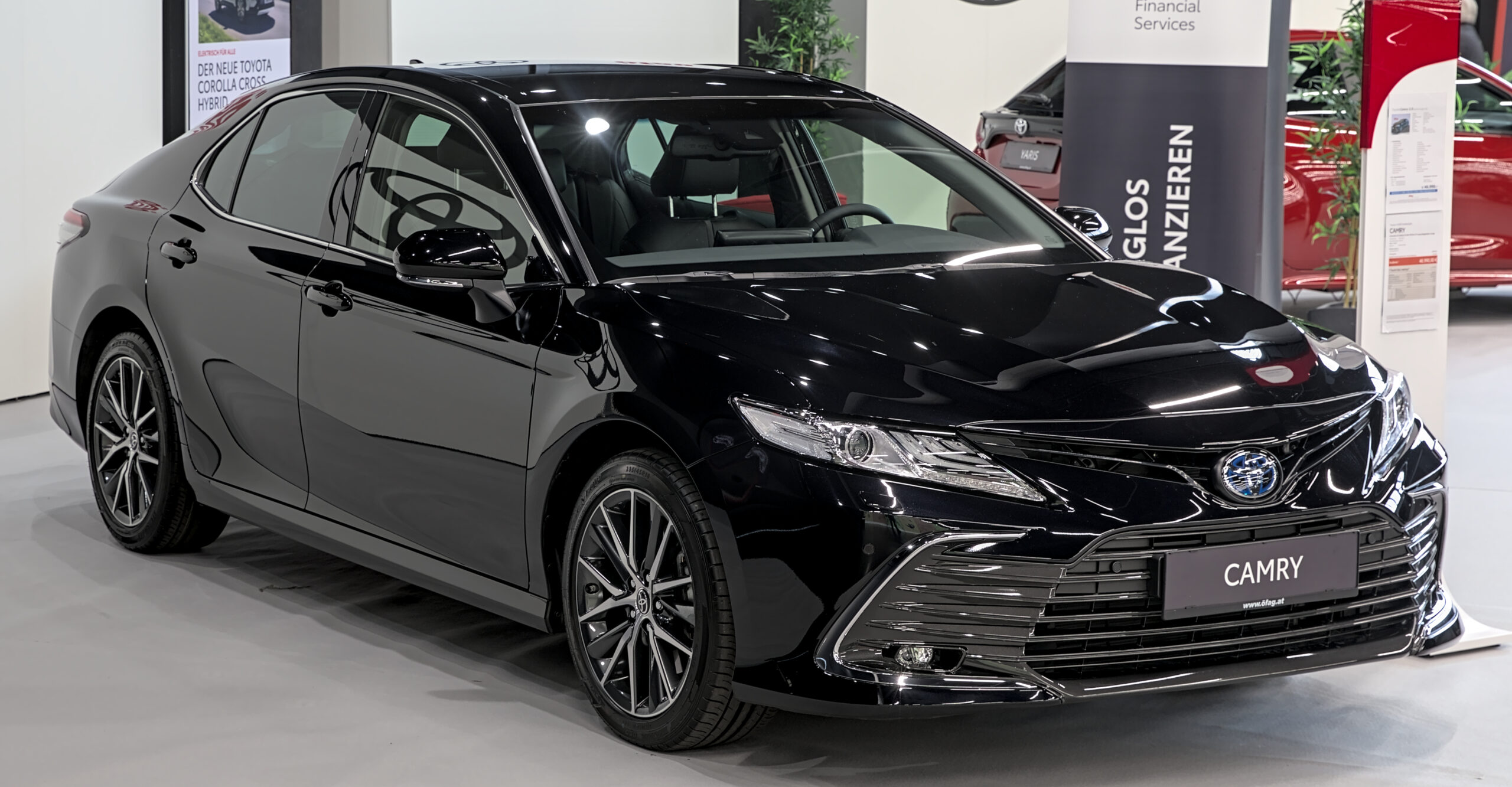There’s something deeply stirring about the ghosts of motoring past. Not the kind that moan in dimly lit garages, but the ones that spark a vivid, almost visceral nostalgia for roaring engines, groundbreaking designs, and automotive personalities that simply refuse to be forgotten. These aren’t just old cars; they’re legends, each with a story, a spirit, and a unique place in the hearts of gearheads worldwide. They’re the brands that made us dream, drool, and maybe even regret that we didn’t get to experience them fully, or that they didn’t stick around just a little longer.
Indeed, some car brands are gone, but they’re far from forgotten. From sporty roadsters that captured the essence of open-road freedom to bold American muscle cars that defined an era, these defunct legends still spark a powerful longing. We reminisce about the classic vehicles that once roamed the streets, models that left an indelible impression and often make us wish for their grand return. It’s a testament to their enduring appeal and the sheer passion they ignited that, even decades later, we’re still talking about them with such enthusiasm.
So, buckle up, because we’re about to take an exhilarating journey through automotive history. We’re celebrating the long-gone marques that, given half a chance, we’d love to see rumble back into existence, perhaps re-imagined for a new generation but still imbued with the soul that made them so special in the first place. Here’s a look at some of the most compelling contenders for a glorious comeback, starting with those that epitomized American spirit and unparalleled luxury.

1. Pontiac: The Muscle Car Rebel
Pontiac was always GM’s resident sporty rebel, a brand that spoke directly to the heart of anyone who craved attitude and style in spades. Known for its lusty and iconic muscle cars and sports saloons, it carved out a niche for itself that was utterly distinct within the crowded General Motors family. From the Firebird to the legendary GTO, Pontiac vehicles weren’t just transport; they were statements, embodying a raw, unadulterated American automotive prowess that few could match.
This brand, unfortunately, often struggled during times of austerity, making it a sad victim of the financial crisis of 2008. The discontinuation of Pontiac left a gaping hole in the automotive landscape, especially for enthusiasts who had grown up dreaming of hitting the road in a Firebird or a GTO. Imagine the possibilities, the sheer excitement, if a new-generation GTO had been allowed to emerge alongside the ‘new’ Camaro, which ironically proved to be a post-crisis lifeline for Chevrolet and GM at large.
Even with Pontiac’s discontinuation, the Firebird Trans Am holds a special, almost sacred, place in the hearts of muscle car fans. Introduced in the late 1960s, it gained iconic status through legendary appearances in films like “Smokey and the Bandit.” Its powerful V8 engine and distinctive styling were unmistakable, and its aggressive stance, T-top roof, and roaring engine made it a favorite on both the track and the street. The demand for vintage models continues to thrive, proving that the Trans Am’s legacy endures, a constant reminder of what we lost.
It’s difficult to pinpoint exactly what place Pontiac could have in today’s world, especially with even the Camaro no longer around. The GTO, while always wonderful, was forever an underdog, and these days, backing underdogs can be risky business. Yet, the longing persists. We would absolutely love to see an all-new GTO, perhaps one leveraging modern platforms like the Alpha 2 (from the Cadillac CT5) and packing a potent GM LT2 engine, straight out of a Corvette C8. That would be a comeback worthy of the name.
Car Model Information: 1966 Pontiac GTO Coupe
Name: Pontiac GTO
Caption: 2005 Pontiac GTO
Manufacturer: Pontiac (automobile),Holden
Class: Mid-size car,Compact car,Mid-size car
Production: 1963–1974,2003–2006
Predecessor: Pontiac Tempest
Layout: Front-engine, rear-wheel-drive layout
ModelYears: 1964-1974 2004-2006
Categories: 1970s cars, 2000s cars, All articles with unsourced statements, Articles with short description, Articles with unsourced statements from October 2008
Summary: The Pontiac GTO is a front-engine, rear-drive, two-door, and four-passenger automobile manufactured and marketed by the Pontiac division of General Motors over four generations from 1963 until 1974 in the United States — with a fifth generation made by GM’s Australian subsidiary, Holden, for the 2004 through 2006 model years.
The first generation of the GTO is credited with popularizing the muscle car market segment in the 1960s. Some consider the Pontiac GTO to have started the trend with all four domestic automakers offering a variety of competing models.
For the 1964 and 1965 model years, the GTO was an optional package on the intermediate-sized Pontiac LeMans. The 1964 GTO vehicle identification number (VIN) started with 22, while the 1965 GTO VIN began with 237. The GTO was designated as a separate Pontiac model from 1966 through 1971 (VIN 242…). It became an optional package again for the 1972 and 1973 intermediate LeMans. For 1974, the GTO was an optional trim package on the compact-sized Ventura.
The GTO model was revived for the 2004 through 2006 model years as a captive import for Pontiac, a left-hand drive version of the Holden Monaro, itself a coupé variant of the Holden Commodore.
Get more information about: Pontiac GTO
Buying a high-performing used car >>>
Brand: Pontiac Model: GTO
Price: $59,991 Mileage: 4,408 mi.
Read more about: Automotive Icons Unraveled: The Definitive Account of 15 Star Brands and Models That Fell From Grace
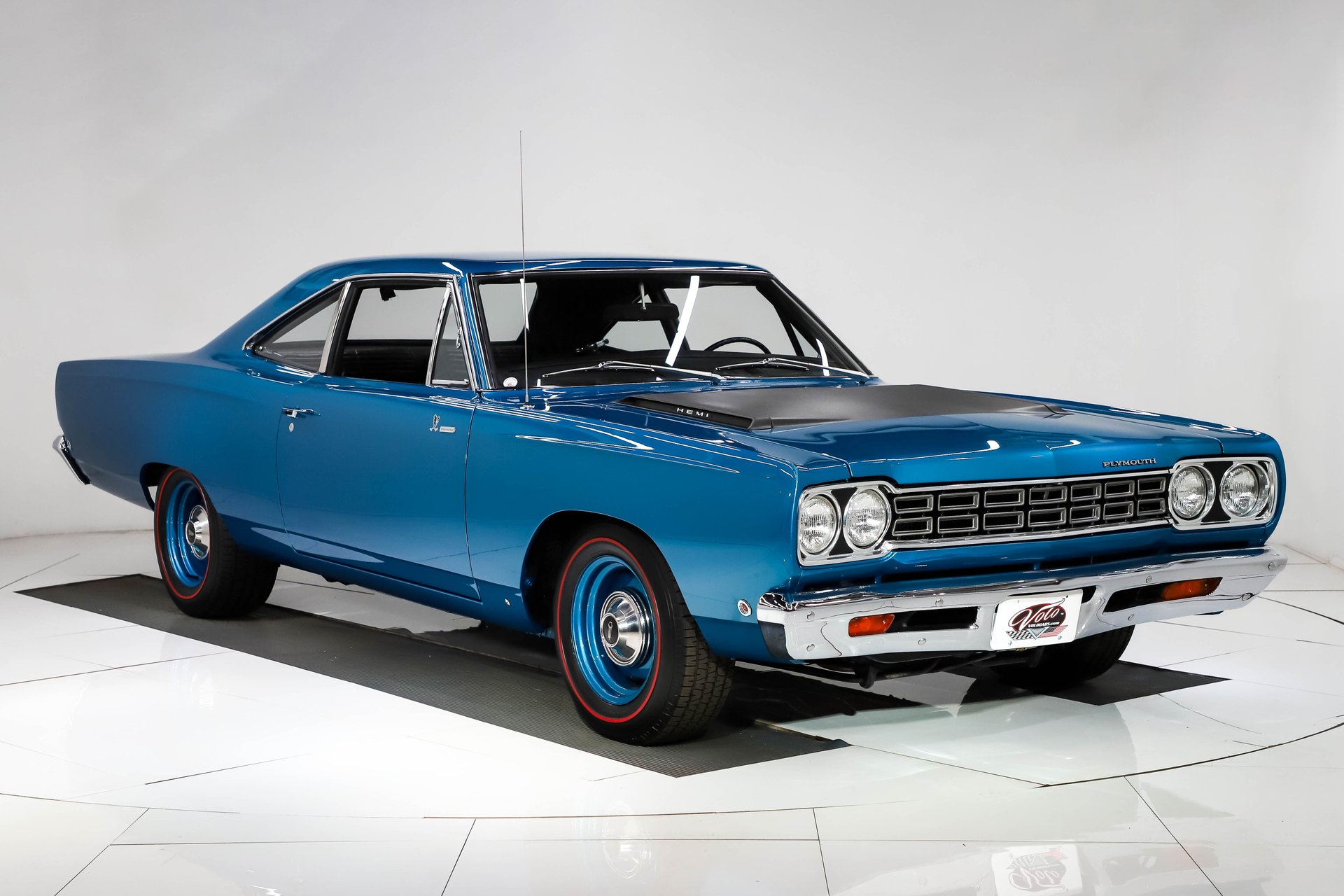
2. Plymouth: American Charm, Muscle, and the Legendary Barracuda
Plymouth, for many, represented the quintessential American automotive spirit: dependable, friendly, and brimming with personality. It rolled out classics that have become etched into the annals of motoring history, cars like the epic Barracuda and the ever-reliable Valiant. While it wasn’t always the flashiest car on the street, Plymouth vehicles possessed an undeniable charm and character that resonated deeply with drivers seeking something robust and true.
The Plymouth Barracuda, in particular, stands as a formidable icon of the muscle car era, especially the models produced from 1964 to 1974. These machines were known for their aggressive styling and powerful engines, perfectly capturing the raw, untamed spirit of American performance. Its presence on the road was utterly unmistakable, making it a definitive symbol of classic muscle car culture that commanded respect and admiration wherever it went.
Despite Plymouth no longer existing as a brand, the Barracuda’s legacy persists with an almost defiant strength. Its bold design and formidable performance capabilities have left an indelible impression, continuing to inspire awe and excitement among enthusiasts. The hope for a modern revival of the Barracuda is a sentiment widely shared by countless car fans, who dream of seeing that distinctive silhouette once again gracing our roads with contemporary flair and muscle.
Plymouth’s contribution to American automotive history was substantial, providing accessible performance and reliable transportation with a unique personality. It demonstrated that cars could be both practical and exciting, bridging the gap between everyday utility and spirited driving. The memories of its classics and the undeniable allure of models like the Barracuda ensure that Plymouth remains a cherished name, perpetually on our wish list for a glorious return.
Car Model Information: 1971 Plymouth Barracuda
Caption: 1970 Hardtop Coupe
Name: Plymouth Barracuda
Manufacturer: Plymouth (automobile)
Production: 1964–1974
Assembly: Fenton, Missouri,Hamtramck, Michigan,Maywood, California,Windsor, Ontario
Layout: Front-engine, rear-wheel drive layout
Class: Pony car
Categories: 1970s cars, All articles with dead external links, All articles with unsourced statements, Articles with dead external links from February 2018, Articles with dead external links from January 2022
Summary: The Plymouth Barracuda is a two-door pony car that was manufactured by Chrysler Corporation from 1964 through 1974 model years.
The first-generation Barracuda was based on the Chrysler A-body and was offered from 1964 until 1966. A two-door hardtop (no B-pillar) fastback design, it shared a great majority of parts and bodywork with the Plymouth Valiant, except for the distinctive wraparound rear glass.
The second-generation Barracuda, though still Valiant-based, was heavily redesigned. Built from 1967 through 1969, it was available as a two-door in fastback, notchback, and convertible versions.
The third generation, offered from 1970 until 1974, was based on the Chrysler E-body, exclusive to it, and the slightly larger Dodge Challenger. A completely new design, the two-door Barracuda was available in hardtop and convertible body styles.
Get more information about: Plymouth Barracuda
Buying a high-performing used car >>>
Brand: Plymouth Model: Barracuda
Price: $44,999 Mileage: 12,468 mi.
Read more about: Remember These? 14 Legendary American Car Brands That Drove Off Into The Sunset (And Why!)
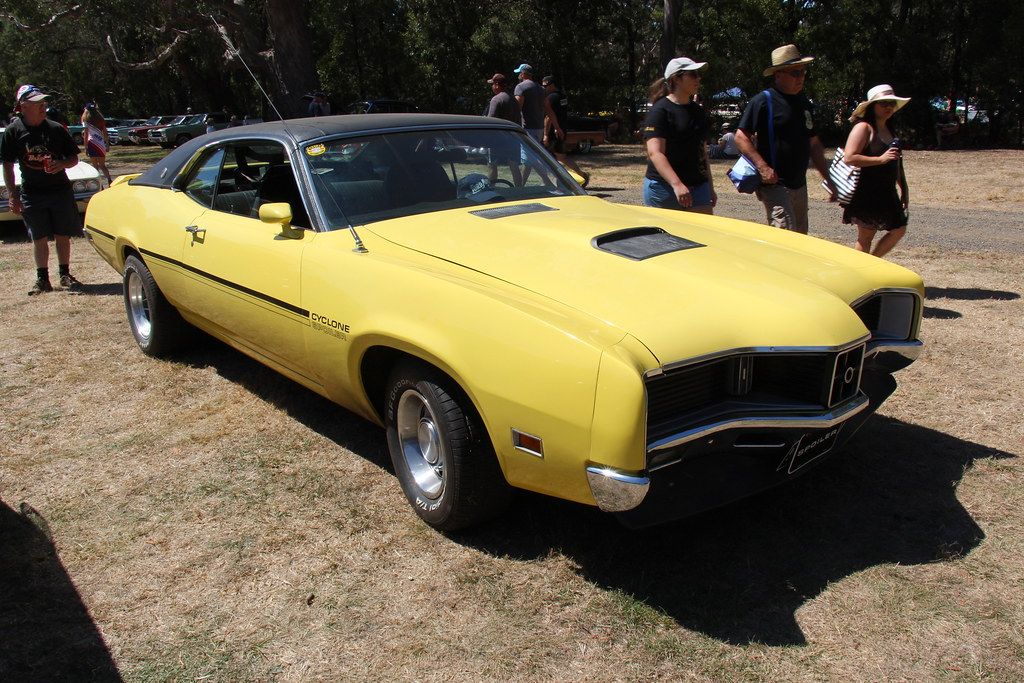
3. Mercury: Bridging the Gap with Balanced Style and Comfort
Mercury occupied a fascinating and important space in the automotive world, deftly bridging the gap between Ford’s everyman appeal and Lincoln’s full-luxury indulgence. It offered a sophisticated touch of flair, providing customers with an elevated experience without demanding the premium price tag or ostentation of a pure luxury marque. This unique positioning allowed Mercury to cultivate a loyal following among those who appreciated refinement and style without excess.
From the sleek Cougars that purred with quiet authority to the stately Grand Marquis that glided down highways, Mercury vehicles were masters of balance. They effortlessly blended stylish design with exceptional comfort, creating rides that were a joy to drive and be driven in. These cars spoke to a discerning audience who sought quality, a distinctive look, and a comfortable journey, all wrapped up in a package that felt a cut above the ordinary without being extravagant.
Mercury’s absence leaves a particular void in the market, especially for those who valued its understated elegance and reliable performance. It represented a sensible yet stylish choice, a brand that understood the nuanced desires of its customers for something that felt special without shouting about it. A modern Mercury revival could certainly find its footing by once again offering that perfect equilibrium of sophistication, comfort, and accessible luxury, catering to a segment that still appreciates nuanced automotive identity.
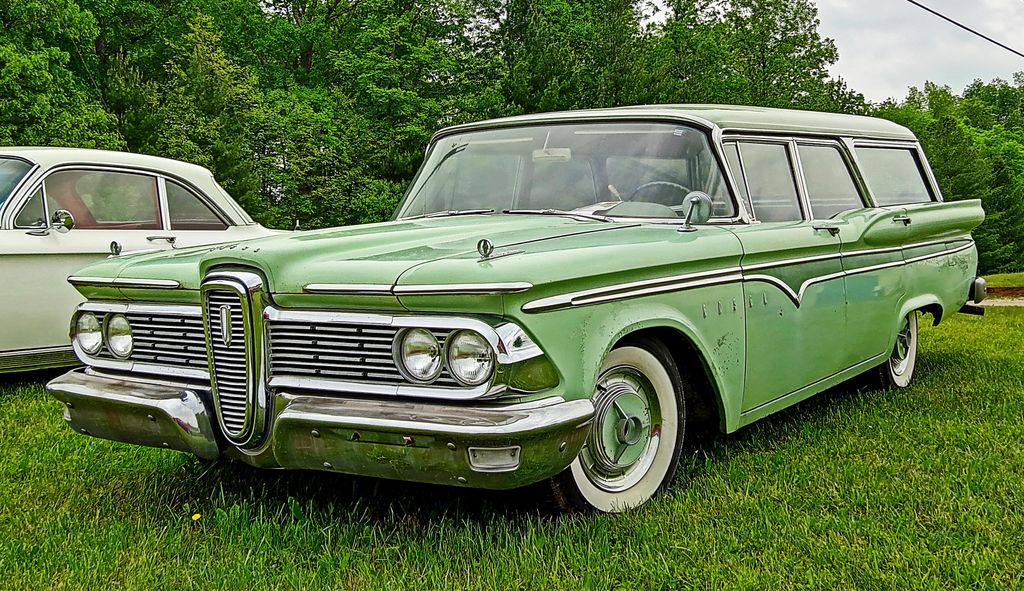
4. Edsel: The Unforgettable Flop with a Unique Design Legacy
The Edsel. Ah, the Edsel. It’s a name that conjures a very specific image in automotive history, often synonymous with bold ambition and a spectacular misstep. Quirky and undeniably bold in its design choices, the Edsel is perhaps remembered more for its infamous flop than for any immediate widespread success. Yet, to dismiss it entirely would be to overlook a crucial piece of American automotive narrative, a cautionary tale that ironically birthed an enduring fascination.
Despite its challenging commercial performance, the Edsel’s unique styling has made it utterly unforgettable decades later. Its distinctive grille and overall aesthetic dared to be different, pushing boundaries at a time when automotive design was often more conventional. This willingness to innovate, even if it didn’t immediately resonate with the buying public, imbues the Edsel with a peculiar charm that has only grown stronger over time among collectors and enthusiasts.
Today, the Edsel stands as a curious testament to originality, a vehicle whose very individuality cemented its place in popular culture. Its story serves as a reminder that not every bold design finds instant universal acclaim, but true uniqueness often gains appreciation in hindsight. A hypothetical comeback for Edsel would be less about market dominance and more about celebrating an icon of singular vision, perhaps reinterpreting that distinctive boldness for a modern audience willing to embrace automotive eccentricity.
Car Model Information: 1958 Edsel Citation
Name: Mercury
Logo: Mercury Logo (automobile company).svg
LogoSize: 150
Fate: Discontinued
Type: Division (business)
Foundation: [object Object]
Founder: Edsel Ford
Defunct: [object Object]
LocationCity: Dearborn, Michigan,Michigan
LocationCountry: U.S.
KeyPeople: Edsel Ford, founder
Industry: Automotive industry
Products: Automobile
Parent: Ford Motor Company
Categories: 1938 establishments in Michigan, 2011 disestablishments in the United States, All articles needing additional references, All articles with unsourced statements, American brands
Summary: Mercury was a brand of medium-priced automobiles that was produced by American manufacturer Ford Motor Company between the 1939 and 2011 motor years. Created by Edsel Ford in 1938, Mercury was established to bridge the gap between the Ford and Lincoln model lines within Ford Motor Company. From 1945 until its closure, it formed half of the Lincoln-Mercury Division of the company.
In addition to serving as a combined sales network for Ford’s two premium automotive brands, Lincoln-Mercury also represented the Continental (1956–1960), Edsel (1958–1960, formally designated Mercury-Edsel-Lincoln Division), Comet (1960–1961), Capri (1970-1978), De Tomaso (1972-1975), and Merkur (1985–1989, forming Lincoln-Mercury-Merkur). Through the use of platform sharing and manufacturing commonality, Mercury vehicles often shared components and engineering with Ford or Lincoln (or both concurrently), serving as counterparts for vehicles from both divisions.
Following an extended decline in sales and market share for Mercury, Ford announced the closure of the division at the end of 2010.
Get more information about: Mercury (automobile)
Buying a high-performing used car >>>
Brand: Edsel Model: Edsel
Price: Not Priced Mileage: 68,904 mi.
Read more about: The Golden Age of Chrome and Power: 15 Iconic American Cars That Defined the 1950s
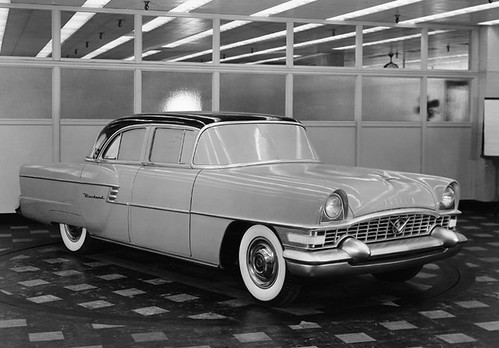
5. Packard: The Epitome of Pre-War American Opulence and Engineering
When we speak of Packard, we’re not just talking about cars; we’re talking about an era when luxury reached its absolute zenith in America. This was a brand synonymous with unparalleled elegance and smart, meticulous engineering, creating vehicles that were truly at the pinnacle of automotive craftsmanship. Packard didn’t just build cars; it crafted experiences, each one a rolling work of art designed for the most discerning clientele.
To imagine rolling down a grand boulevard in a Packard was to picture oneself stepping directly into a 1930s movie, an embodiment of grace, power, and societal stature. These were machines that exuded prestige from every curve and gleaming surface, showcasing a level of detail and mechanical sophistication that set them apart. Packard was the standard by which other luxury vehicles were measured, a true benchmark of American automotive excellence.
Even today, the name Packard carries an incredible caché. Its legacy is one of exquisite taste and technological advancement, revered by collectors and historians alike. A revival of Packard wouldn’t simply be about bringing back a car; it would be about re-establishing a tradition of bespoke, ultra-high-end American luxury. Envision a modern Packard that honors its heritage, offering an unrivaled blend of classic grandeur and contemporary innovation, recapturing the spirit of a truly golden age of motoring.

6. Oldsmobile: Making Everyday Drives Special with Clever Design
Oldsmobile held a special place in the American automotive landscape for generations. It was a brand that understood the importance of the everyday drive, and through its smooth, clever designs, it consistently found ways to make those daily journeys feel a little more special. Oldsmobile wasn’t always about outright flash or groundbreaking performance; it was about delivering a consistent, satisfying, and enjoyable driving experience that resonated with a broad spectrum of drivers.
From the iconic Cutlass to numerous other beloved classics, Oldsmobile vehicles proved time and again that practicality didn’t have to be a dull affair. They combined reliable engineering with thoughtful features and appealing aesthetics, crafting cars that were both functional and genuinely fun to own and operate. This blend of sensibility and subtle flair made Oldsmobile a staple in countless American households, a trusted companion for commutes, road trips, and all of life’s moments.
The enduring affection for Oldsmobile speaks volumes about its impact. Its cars were an integral part of American life, shaping daily routines and creating lasting memories. While the brand may be gone, the concept of a car that makes practicality feel special is more relevant than ever. A modern Oldsmobile could tap into this rich legacy, offering intelligent design, advanced features, and that familiar touch of accessible luxury that characterized its best models, providing a refreshing alternative in today’s market.
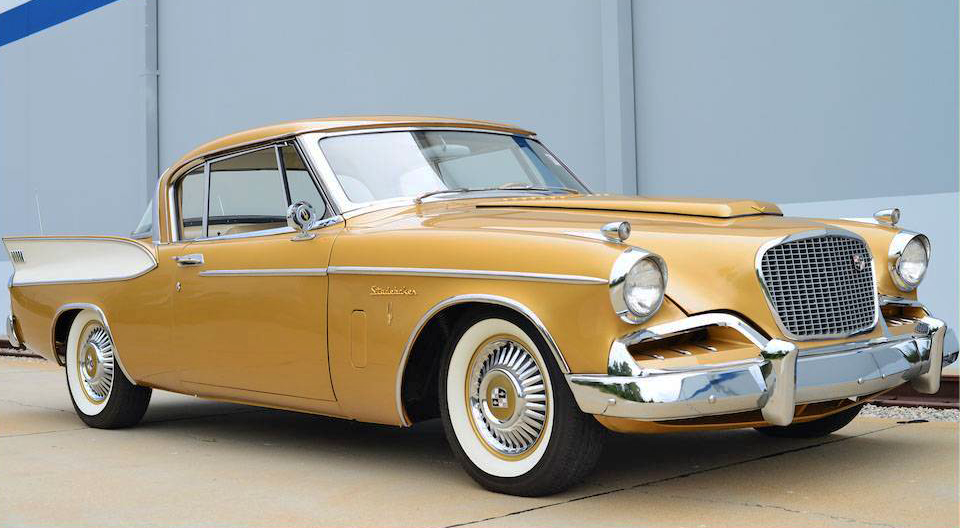
7. Studebaker: A Long History of Standing Out with Bold Designs
Studebaker’s history is as rich and winding as some of the roads its vehicles once traversed, stretching all the way back to wagons and beyond. It was a company that, throughout its long and varied life, consistently found ways to stand out from the crowd, carving out a unique identity in an ever-evolving automotive industry. Studebaker never shied away from innovation or distinctive styling, often pushing boundaries with designs that were both bold and memorable.
Whether it was their sleek sedans that hinted at aerodynamic prowess or their more audacious and eye-catching designs, Studebaker cars made an unmistakable presence on the road. They possessed a certain panache, a refusal to be merely pedestrian, that endeared them to owners and onlookers alike. This commitment to distinctive aesthetics and engineering set Studebaker apart, making it a brand with a truly memorable footprint in automotive history.
The legacy of Studebaker is one of resilience, innovation, and a constant pursuit of originality. Its vehicles represent a bygone era of American ingenuity and design courage, a time when companies dared to be different. A modern Studebaker revival could certainly capitalize on this heritage, perhaps offering a lineup of vehicles that combine striking, contemporary designs with cutting-edge technology, while still retaining that essential spirit of individuality and boldness that defined the originals. It would be a welcome return for a truly distinctive marque.
Now that we’ve journeyed through some of America’s most cherished and opulent automotive memories, it’s time to cast our net wider. The world of motoring is rich with stories of brands that burned brightly before fading into history, leaving behind a legacy that still captivates. From the flamboyant flair of mid-century American cruisers to the zippy charm of British roadsters, the ingenious design of European innovators, and the surprisingly sporty spirit of Japanese cult classics, this next selection of eight defunct marques offers a diverse tapestry of automotive longing. Each one, in its own way, captured the imagination and etched itself into the hearts of drivers, making us wish for just one more turn of the key, one more rumble of the engine, reimagined for the modern era. Let’s dive into these next eight legends.
Read more about: Gone But Not Forgotten: Tracing the Legacy of 14 Iconic American Car Brands That Vanished from Dealerships
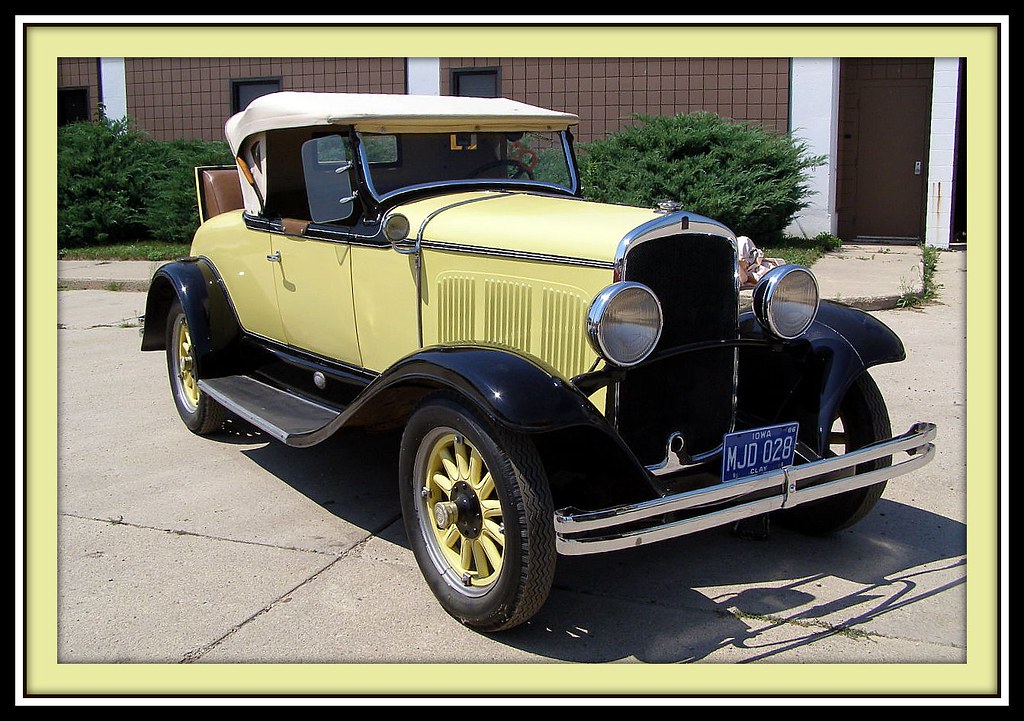
8. DeSoto: The Mid-Century Style Icon
When you think of the streets of mid-century America, DeSoto should instantly spring to mind. This wasn’t just another car; it was a statement of flamboyant style, a veritable explosion of pizzazz that made every drive feel like a special occasion. DeSoto added a unique flourish to the automotive landscape, confidently showcasing designs that dared to be different and turning heads wherever they went.
Its distinct looks and robust performance capabilities made DeSoto a firm favorite for drivers who genuinely wanted something beyond the ordinary. These cars offered a blend of bold aesthetics and reliable engineering, appealing to those who appreciated character and flair in their daily commute. DeSoto wasn’t content to simply blend in; it was built to stand out, to command attention with its unique personality.
Today, a modern DeSoto could absolutely reignite that passion for distinctive design. Imagine a brand that celebrates individuality, perhaps offering vehicles with daring lines and vibrant color palettes that harken back to its glorious past, but with all the technological sophistication of the 21st century. A reborn DeSoto could carve out a niche for drivers yearning for automotive art that refuses to be boring, bringing back that much-needed dose of mid-century charm.
Car Model Information: 1947 Desoto DeLuxe
Name: DeSoto
Logo: Desoto brand emblem.png
LogoSize: 150
Producttype: Automobile,truck
Producedby: Chrysler Corporation
Introduced: Walter Chrysler
Discontinued: [object Object]
Related: Plymouth (automobile)
Markets: North America
Previousowners: Chrysler
Categories: 1920s cars, 1928 establishments in Michigan, 1930s cars, 1940s cars, 1950s cars
Summary: DeSoto (sometimes De Soto) was an American automobile brand that was manufactured and marketed by the DeSoto division of Chrysler Corporation from 1928 to the 1961 model year. More than two million passenger cars and trucks bore the DeSoto brand in North American markets during its existence.
Get more information about: DeSoto (automobile)
Buying a high-performing used car >>>
Brand: DeSoto Model: DeSoto
Price: $27,000 Mileage: 11,542 mi.
Read more about: Unraveling America’s Automotive Ancestry: A Deep Dive into the Oldest Car Brands That Shaped a Nation’s Roads

9. MGB: The Quintessential British Roadster
Ah, the MGB. The very name conjures images of winding country lanes, the sun on your face, and the wind in your hair. Nothing, and we mean nothing, screams British roadster cool quite like this little icon. Tiny, zippy, and perpetually ready for open-top adventures, the MGB wasn’t just a car; it was a lifestyle statement, an accessible slice of motoring heaven that brought joy to countless enthusiasts around the globe.
Driving an MGB was about a visceral connection to the road. It wasn’t about raw power or blistering speed, but about the pure, unadulterated pleasure of a lightweight, perfectly balanced machine. Every shift of the gear lever, every corner taken with precision, was a celebration of simple, engaging motoring. It was the kind of car that made even the most mundane journey feel like an escape, a mini-adventure waiting to unfold.
If ever there was a car crying out for a modern resurrection, it’s the MGB. Imagine a contemporary MGB, perhaps an all-electric or lightweight hybrid, retaining that iconic two-seater layout and open-top exhilaration. It would need to be affordable, nimble, and utterly charming, proving that sometimes, less truly is more. A new MGB could re-teach us the joy of driving for driving’s sake, a delightful reminder of British motoring at its purest.

10. Duesenberg: The Apex of American Automotive Opulence
To utter the name Duesenberg is to speak of an era when automotive luxury wasn’t just a feature, but an entire philosophy. This was a brand that didn’t just build cars; it crafted rolling monuments of ultra-luxury and insane engineering, designed exclusively for the era’s elite. Only the truly rich and undeniably famous had the privilege of getting behind the wheel of these magnificent machines, but everyone, absolutely everyone, admired their sleek curves and top-notch craftsmanship from afar.
What’s fascinating is that Duesenberg’s chances of a glorious return might be even higher today than some more mainstream brands. Why? Because the market for ridiculously expensive, meticulously over-engineered opulence is, perhaps bizarrely, absolutely huge right now. We’re in a world where six-figure SUVs sell out for years and million-pound hypercars are almost commonplace. This creates a perfect environment for Duesenberg to return in its original, money-no-object form, producing machines that are pure statements of status and unrivaled luxury.
Even a century after its dissolution in 1937, the Duesenberg name still carries an incredible caché. Those magnificent old monsters are considered blue-chip collector gold, revered for their historical significance, engineering prowess, and sheer beauty. The enduring allure of Duesenberg proves that true luxury, when executed with such singular vision, transcends time and trends, retaining its value and desirability for generations.
So, what would a Duesenberg revival look like? We’re envisioning something truly spectacular, perhaps a fusion where Pagani meets Rolls-Royce. Think the ultimate in artisanal, craftsmanship-led luxury, where every stitch, every panel, every intricate component is a work of art. It wouldn’t just be a car; it would be a bespoke, ultra-high-end American masterpiece, recapturing the spirit of a golden age while pushing the boundaries of modern automotive artistry. That’s a comeback we could all get behind.
11. AMC: The Scrappy Underdog with Clever Practicality
American Motors Corporation, or AMC, was the definitive scrappy underdog of the U.S. automotive scene. While bigger players battled it out with brute force, AMC consistently delivered something different: clever practicality fused with a distinct sense of style. They proved that you didn’t need to be the biggest or the loudest to make a lasting impression; sometimes, being smart and versatile was all it took.
From the sensible, family-friendly Rambler to the truly legendary and often misunderstood Gremlin, AMC models showcased a knack for innovative design that blended utility with personality. These weren’t just vehicles; they were solutions, offering smart packaging and resourceful engineering that often defied convention. AMC dared to be different, and for many, that was precisely its charm.
In today’s diverse market, a resurrected AMC could be an absolute breath of fresh air. Imagine a brand that prioritizes ingenuity, offering vehicles that are both uniquely stylish and brilliantly practical, perhaps with a focus on sustainable materials or modular designs. A modern AMC could champion the spirit of the intelligent outsider, providing characterful and clever alternatives that appeal to a new generation of drivers seeking something truly distinctive and resourceful.

12. Tucker: The Visionary Ahead of Its Time
Preston Tucker’s dream was a meteor streaking across the automotive sky: brilliant, brief, and utterly unforgettable. The Tucker Corporation, despite producing only a single model – the revolutionary Tucker 48 – became an instant legend. It was a car so innovative and so far ahead of its time that it almost felt like it belonged in a different century altogether, challenging every established norm of automotive design and safety.
Collectors still swoon over its myriad forward-thinking features, which included a centrally mounted third headlight that turned with the steering wheel, a padded dashboard for enhanced safety, and an engine designed for quick removal. The Tucker 48 was a masterclass in visionary engineering, a testament to what happens when you throw out the rulebook and dare to dream big. Its story is a powerful reminder of how true innovation often faces resistance.
If the Tucker name were to make a comeback, it would need to do so with the same audacious spirit that defined its original iteration. Picture a limited-run, ultra-innovative vehicle, perhaps an electric hyper-sedan that pushes technological and design boundaries in ways no other manufacturer dares. A modern Tucker wouldn’t aim for mass appeal; it would aim for automotive immortality, honoring its pioneering spirit and once again redefining what’s possible on four wheels.
Read more about: Gone But Not Forgotten: Tracing the Legacy of 14 Iconic American Car Brands That Vanished from Dealerships
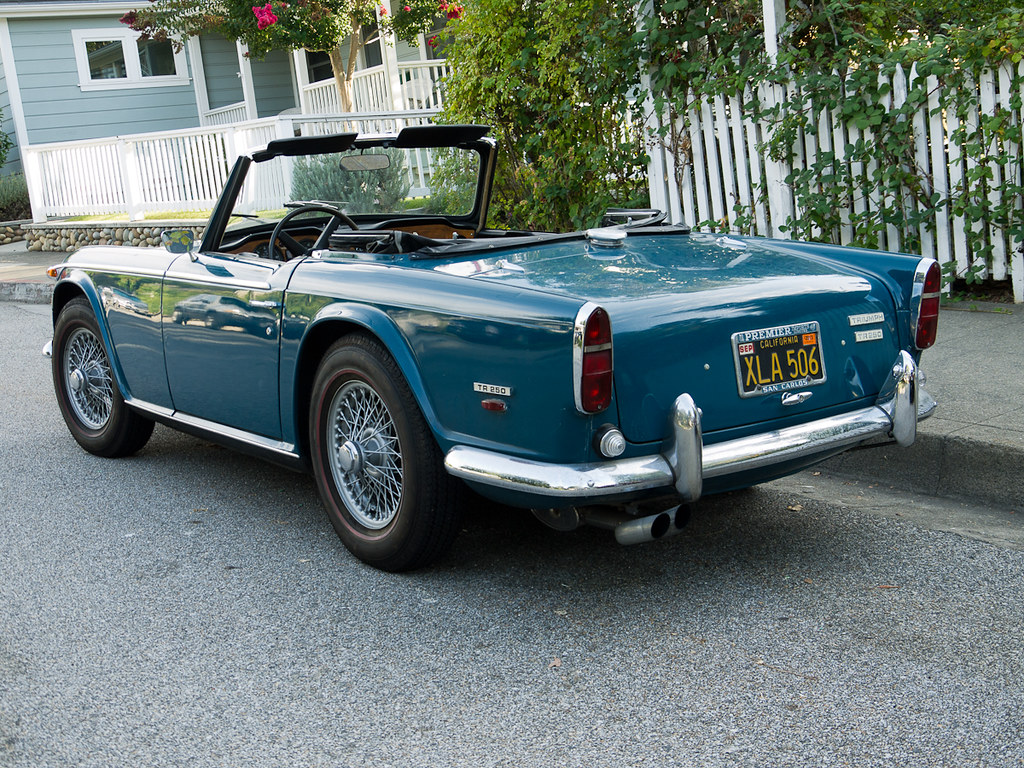
13. Triumph: British Charm and Sporting Flair
There’s a certain intangible magic to British sports cars, and Triumph captured that essence beautifully. This was a brand defined by its irresistible British charm and an abundance of sporting flair, crafting vehicles that weren’t just means of transport, but instruments of pure driving pleasure. Every TR roadster, from its eager engine note to its direct steering, seemed to possess a distinct personality, eager to turn every ordinary road into an exhilarating joyride.
Driving a Triumph was an immersive experience, a direct connection between driver and machine. It was about feeling the road, hearing the engine sing, and embracing the open-air freedom that only a true roadster could offer. These cars had a way of making you smile, whether you were tackling a twisty backroad or simply cruising through town. They embodied the spirited side of British motoring, proving that driving could, and should, always be fun.
What a joy it would be to see a modern Triumph emerge, dedicated once again to pure, unadulterated driving engagement. Imagine a lineup of lightweight, responsive sports cars, perhaps with efficient turbocharged engines or cutting-edge electric powertrains, but always prioritizing driver involvement. A reborn Triumph could offer that coveted blend of classic British design cues and contemporary performance, bringing back a much-missed dose of genuine sporting charm to our roads.
Car Model Information: 2025 Genesis GV70 2.5T
Sp: uk
Caption: Triumph 1800 Roadster
Name: Triumph Roadster
Production: 1800: 1946–1948, 2501 made{{Sfn,Lawrence,1996,p=302
Manufacturer: Standard Motor Company
Class: Sports car
Successor: Triumph TR2
Engine: 1800: 1776 cc{{Sfn,Barker,1968,pp=71–74
Transmission: 1800: 4-speed manual,2000: 3-speed manual
Wheelbase: 100 in
Abbr: on
Length: 168.4 in
Width: 64 in
Weight: 1800: {{convert,2540,lb,0,abbr=on
Categories: All Wikipedia articles written in British English, All articles with unsourced statements, Articles with short description, Articles with unsourced statements from January 2015, Articles with unsourced statements from July 2013
Summary: The Triumph Roadster is a roadster produced by Britain’s Standard Motor Company from 1946 until 1949. It was first available as the Triumph 1800 Roadster (18TR) from 1946 to 1948 and then as the Triumph 2000 Roadster (TRA) from 1948 to 1949.
Get more information about: Triumph Roadster
Buying a high-performing used car >>>
Brand: Triumph Model: TR roadster
Price: $40,000 Mileage: 24,970 mi.
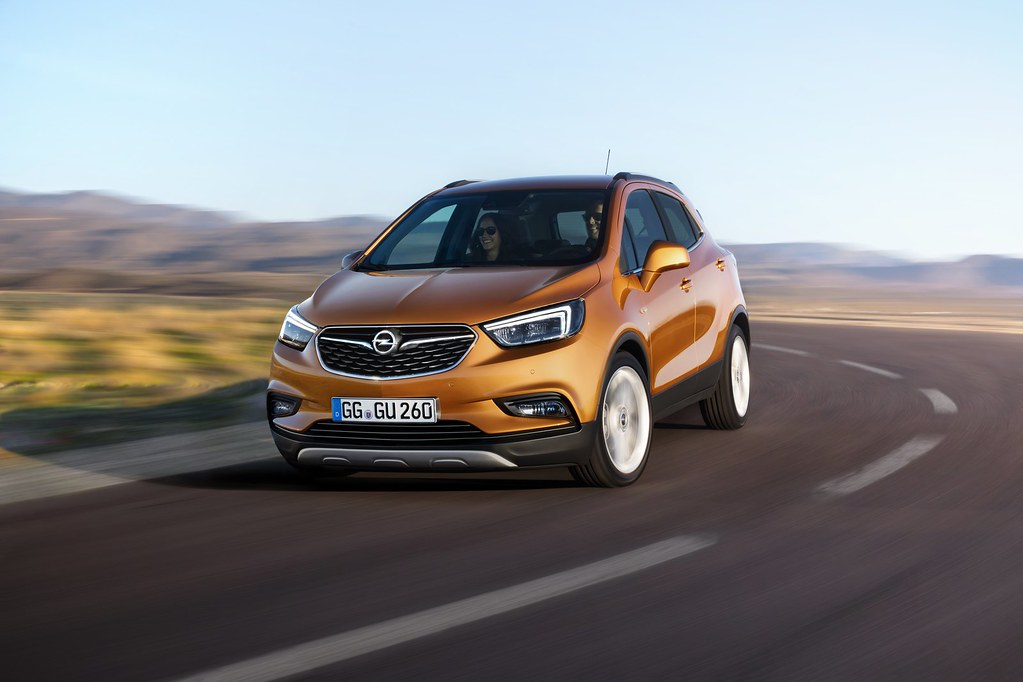
14. Opel: Smart, Efficient, and Endearingly Quirky
Opel cars always seemed to possess a certain prescience, a knack for feeling just a little ahead of the curve. Characterized by their smart engineering, efficient powertrains, and an endearing touch of quirkiness, they carved out a significant place in the hearts of European drivers. Opel understood the balance between practicality and personality, delivering vehicles that were both sensible and surprisingly engaging.
Europeans loved Opel for its unwavering commitment to practicality without ever sacrificing an ounce of style. These were cars that fit seamlessly into urban life, handled long journeys with ease, and did so with a distinctive aesthetic that wasn’t flashy, but always well-considered. Opel offered a refreshing alternative to the mainstream, a choice for those who appreciated intelligent design and subtle sophistication.
In today’s world, a revived Opel could perfectly capture this ethos once more. Imagine a brand that focuses on smart urban mobility solutions, efficient family cars, and subtly stylish crossovers that offer immense value and thoughtful features. A modern Opel could lean into its heritage of accessible innovation, bringing back that unique blend of German engineering, everyday usability, and a welcome dash of endearing eccentricity that made it so beloved.
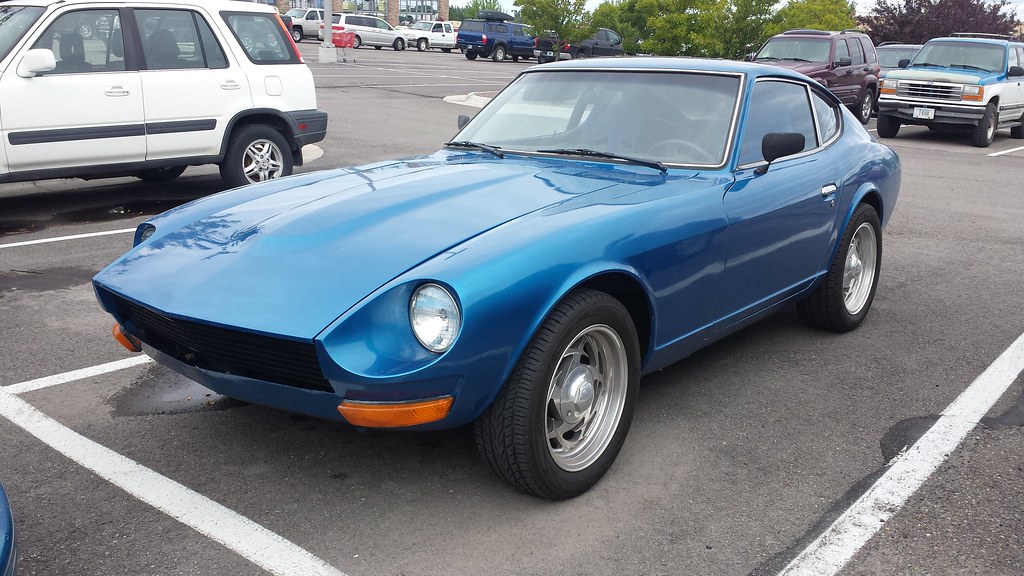
15. Datsun: The Cult Classic That Captured Hearts
For many, Datsun represents a glorious era where affordability, reliability, and surprising sportiness converged into an irresistible package. This was a brand that truly captured hearts worldwide, demonstrating that you didn’t need to break the bank to own a car that was genuinely fun to drive and utterly dependable. Datsun offered a refreshing approach, democratizing the joy of motoring for a global audience.
The iconic Datsun 240Z, in particular, cemented the brand’s place as a true cult classic. Its sleek lines, powerful straight-six engine, and accessible performance created a phenomenon that still resonates today. The 240Z wasn’t just a car; it was a symbol of attainable automotive passion, proving that Japanese engineering could deliver a sports car experience every bit as thrilling as its European rivals, but without the prohibitive price tag.
Imagine a modern Datsun revival, perhaps focusing on a new generation of affordable, fun-to-drive vehicles that offer exceptional value and a delightful hint of sportiness. A new Datsun could embody the spirit of the original 240Z, perhaps with a focus on lightweight electric sports cars or engaging compacts that reconnect with a generation eager for genuine driving enjoyment without unnecessary complexity. It would be a welcome return for a truly beloved and influential marque.
The automotive graveyard is filled with names that still echo with power and personality. As we’ve seen, from the flamboyant flair of DeSoto to the accessible thrills of the MGB, the engineering marvels of Duesenberg, and the cult status of Datsun, these brands left an indelible mark. They remind us that cars are more than just transport; they are expressions of culture, engineering, and passion. While many have faded, the longing for their return persists, a testament to the unforgettable character they brought to the road. Here’s hoping that, one day, some of these fallen giants might roar back to life, bringing their unique spirit to a new generation of enthusiasts and reminding us all why we fell in love with cars in the first place. The dreams of what could be, of these legends making a spectacular comeback, are enough to keep any petrolhead’s heart racing.



